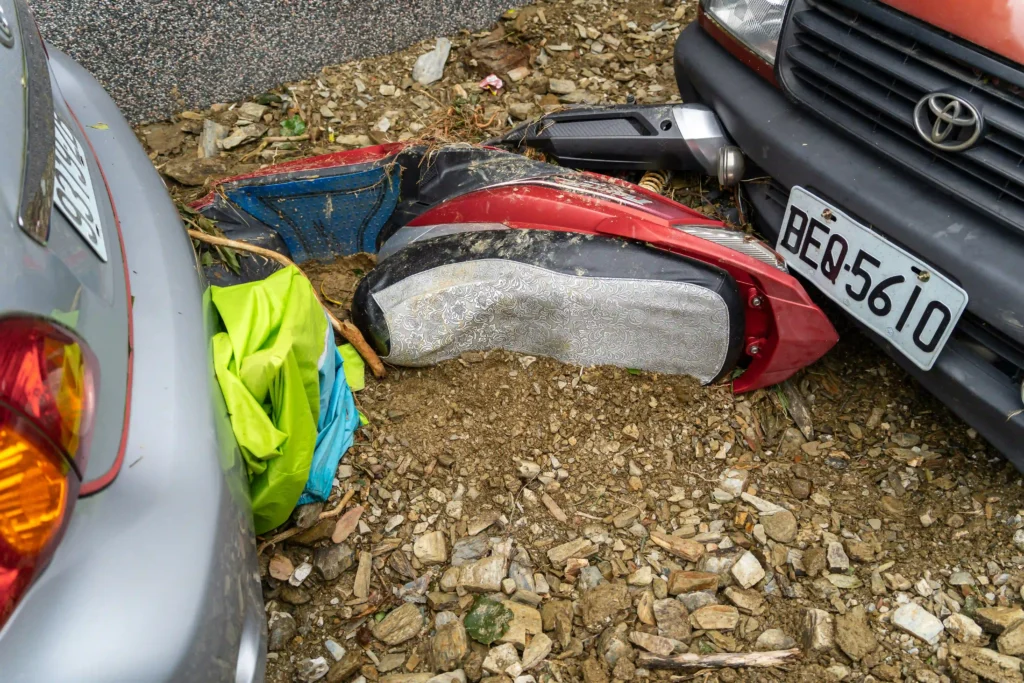Introduction
Typhoon Tino brought destructive winds and heavy rainfall to parts of the Philippines in early November 2025. As it entered the Philippine Area of Responsibility, it quickly intensified into a typhoon. Its path across the Visayas and portions of Mindanao displaced tens of thousands of people, disrupted travel, and caused significant damage to homes and public infrastructure.
This article examines the known facts about the storm’s damage, its broader influence on communities, and what the aftermath reveals about resilience in the affected regions. It is written for general readers seeking a grounded understanding of the event and the people who lived through it.
The Path of Typhoon Tino
When Typhoon Tino was first recorded, the Philippine weather bureau placed multiple provinces under high wind signals. It developed east of the country before making its way toward Eastern Samar and Leyte. Sustained winds were reported at about 150 kilometers per hour, with gusts of over 210 kilometers per hour.
From there, Tino crossed the Visayas and moved toward the West Philippine Sea. This route placed large portions of central and southern Philippines under threat. Coastal areas faced intense wind and rainfall, while inland communities struggled with power interruptions and flooding. The typhoon later weakened as it left the country’s monitoring zone, but not before leaving behind damage that would take weeks to assess fully.
Damage Across Affected Regions
Homes and Infrastructure
Initial reports indicated that thousands of houses were damaged or destroyed. Coastal villages suffered the most, where storm surges reached several meters high. Communities near rivers also endured flash flooding and landslides.
Roads became impassable as debris, fallen trees, and landslides blocked transport routes. Power lines were cut in multiple provinces, leading to extended blackouts. The combination of wind and flooding placed added pressure on emergency responders who had limited access to certain areas.
Livelihoods and Local Economies
For rural areas dependent on agriculture, the timing of the storm was particularly hard. Farmers preparing for harvest lost crops to strong winds and excessive rainfall. Fishing operations were suspended as authorities closed ports and banned sea travel for safety. In towns where tourism plays a growing role in the economy, such as coastal Cebu and Bohol, resort operations halted temporarily due to safety risks.
Many local businesses that rely on daily operations, small markets, tricycle drivers, and repair shops were unable to operate for days after landfall. This interruption had ripple effects on household incomes, emphasizing how even short-term natural disasters can undermine financial stability in local economies.
Human Impact and Community Response
Displacement and Relief
The storm displaced approximately 80,000 people in the Caraga region alone. Many sought temporary shelter in schools and public gyms adapted as evacuation centers. Others moved in with relatives in safer areas.
Relief efforts began quickly after the storm passed. Local government units, supported by national agencies, distributed food packs and clean water. Community volunteers helped manage shelters and assist families in retrieving belongings from damaged homes.
In many rural towns, churches and local associations played a central role in organizing aid. The sense of bayanihan collective cooperation deeply rooted in Filipino culture was visible as residents helped one another clear debris and rebuild.
Emotional and Psychological Effects
While physical destruction is easier to record, the emotional toll is harder to measure. For families who have endured repeated storms over the years, Typhoon Tino served as another reminder of vulnerability to extreme weather. Local mental health advocates encouraged residents to seek counseling or join group discussions, recognizing that recovery involves both material and psychological rebuilding.
Influence on Regional Preparedness
Lessons from Tino
Typhoon Tino reinforced the importance of local preparedness. Communities that had practiced early evacuation protocols reported fewer casualties and smoother transitions into shelters. Towns that invested in elevated evacuation centers and early-warning systems were better able to handle the sudden rise in floodwaters.
Local leaders also observed that communication networks remain a weak point. Power failures cut off information channels, and some barangays struggled to receive real-time updates. Improving satellite-based communication and backup power sources could help future response efforts.
Broader Influence on Policy
On a national level, Tino highlighted ongoing gaps in climate adaptation and urban planning. Areas already prone to flooding need stronger enforcement of zoning laws and better drainage infrastructure. Discussions after the storm focused on whether disaster risk reduction budgets are sufficient and whether more localized decision-making could help speed up recovery operations.
Recovery and Rebuilding
Restoring Basic Services
In the days following the storm, government agencies prioritized reopening major roads and restoring electricity. Engineers and linemen worked extended hours to reconnect power lines across affected provinces. Water districts also mobilized to clean and restart supply systems that had been contaminated by floodwaters.
Schools and offices reopened gradually once conditions stabilized. In many communities, residents began rebuilding homes using salvaged materials. Assistance programs provided construction kits and livelihood grants, although distribution varied by region.
Supporting Livelihoods
Recovery was not only about rebuilding structures but also about helping people return to work. Agricultural agencies coordinated seed distribution to farmers who lost crops. Fisherfolk received support for repairing damaged boats. Local microfinance institutions offered deferred payment schedules to small entrepreneurs affected by the storm.
These recovery efforts demonstrated the resilience of local economies. Although financial loss was significant, the speed of recovery in some sectors showed that community-led action and cooperation can soften the long-term blow of natural disasters.
Environmental Considerations
Ecosystem Impact
Beyond human settlements, Typhoon Tino likely disrupted natural habitats. Strong winds and runoff can damage coral reefs, mangrove areas, and coastal vegetation. These ecosystems are vital for coastal protection and fisheries. Their recovery is essential to long-term environmental stability.
Reforestation programs and mangrove rehabilitation projects often follow major storms. Such efforts not only restore the environment but also create employment during the rebuilding phase. Encouraging local participation ensures that these projects are maintained and monitored.
Climate Context
Although scientific data specific to Tino’s formation and trajectory are limited, meteorologists continue to link the increasing frequency of severe storms to changing climate patterns. The Philippines, positioned along the Pacific typhoon belt, remains one of the most vulnerable nations. Public awareness and education about sustainability, waste management, and renewable energy form part of the broader effort to mitigate long-term risk.
Practical Tips for Staying Informed
Reading credible updates during and after a typhoon is critical. Social media often spreads unverified claims, which can cause panic. The following simple practices can help readers stay safe and informed:
- Rely on official sources. Follow the Philippine weather bureau, local government units, and reputable news agencies.
- Check multiple updates. Weather conditions can change rapidly, and official forecasts are updated frequently.
- Prepare in advance. Keep emergency kits, rechargeable lights, and basic supplies ready before storm season.
- Share responsibly. Verify posts before forwarding to friends or community groups. False information during a crisis can endanger lives.
- Engage locally. Attend barangay briefings and volunteer when safe to do so. Helping in coordinated ways strengthens overall response.
These small actions make a meaningful difference in disaster readiness and recovery.
Conclusion
Typhoon Tino left a trail of physical and emotional damage across the Philippines. It disrupted lives, destroyed property, and tested the resilience of entire regions. Yet it also demonstrated the power of community cooperation and the value of preparation.
For readers and residents alike, the lessons of Tino emphasize awareness, adaptability, and unity. Learning from each storm helps communities face future challenges with greater strength and understanding.
Continue following verified updates and local initiatives that aim to strengthen disaster response and sustainable rebuilding. By staying informed and engaged, each person contributes to a safer and more resilient Philippines.
Subscribe to our newsletter and get weekly updates on our blogs!

